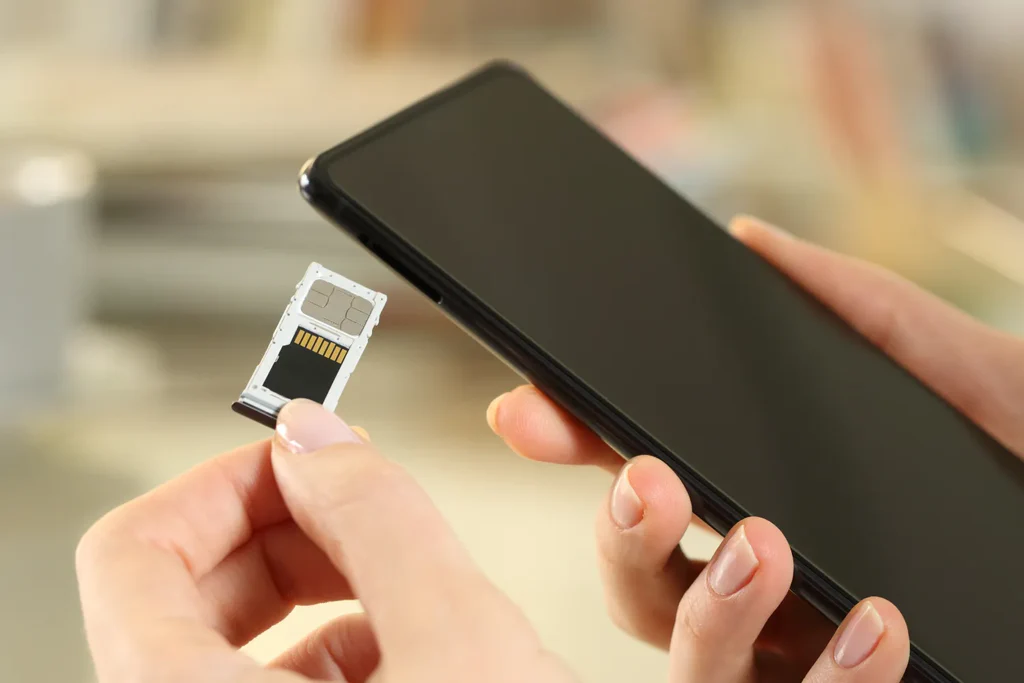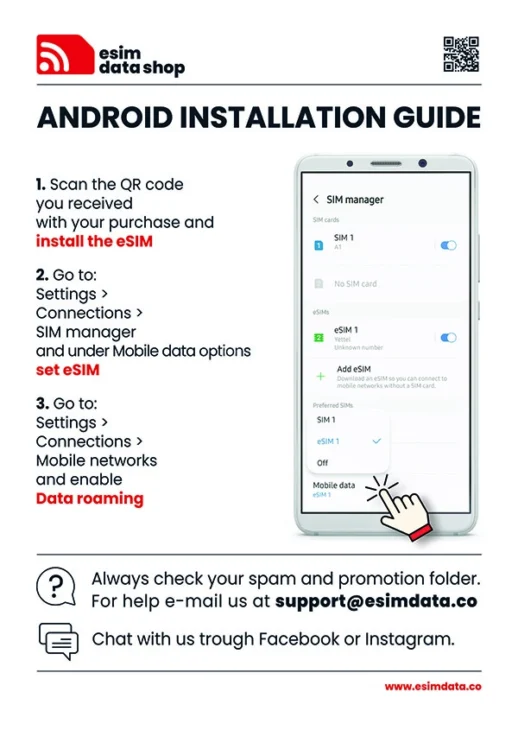eSIM vs Local SIM 2025: Which Works Best for Travelers?

Disclaimer:
This guide is intended for informational purposes only. We are not affiliated with, sponsored by, or endorsed by any of the brands, providers, or external links mentioned in this article. Always verify directly with providers before making a purchase.
Stay Connected on Your 2025 Trip
Traveling today is as much about exploring new places as it is about staying connected. Whether you’re planning a weekend getaway or a long-term stay, choosing the right SIM can transform your experience. The debate between eSIM vs Local SIM is more relevant than ever, and in this guide, we’ll break it down for casual travelers, helping you make an easy, confident choice.
I remember the first time I used an eSIM during a short trip abroad. Activating my data plan took just minutes, and I didn’t have to hunt for a local SIM at the airport. That convenience instantly showed me why mobile network innovation was changing travel for good.

What is an eSIM and How It Works for Travelers
Staying connected while traveling has never been easier, and eSIMs are at the heart of that shift. Before comparing them to local SIM cards, let’s break down what an eSIM actually is and how it works for modern travelers.
eSIM Explained in Simple Terms
An eSIM, or embedded SIM, is a digital version of the SIM card built into your device. Unlike traditional SIMs, you don’t need a physical card or a store visit to get connected. By 2016, eSIM technology was officially standardized, but it only became widespread around 2020 as more phones and carriers started supporting it. Today, many high-end smartphones and smartwatches offer eSIM capability.
However, not everyone can use an eSIM yet. Older phones, some budget devices, and regions with limited carrier support may still require a traditional SIM. For travelers with compatible devices, it’s a game-changer: one device can store multiple numbers, switch between plans seamlessly, and stay connected instantly upon arrival.
Advantages of Using an eSIM Abroad
For travelers, the biggest advantage of an eSIM is pure convenience. There’s no more fumbling with tiny SIM cards, hunting for kiosks at airports, or worrying about losing them mid-trip. With an eSIM, you can switch plans for different countries in minutes, a game-changer for multi-destination travel. It also frees up your physical SIM slot, so you can keep your home number active while using a local or international plan abroad.
Major eSIM providers like Airalo, Holafly, Nomad, and Saily now offer regional and global plans, meaning you can buy a single “Europe” plan and stay connected across 30+ countries without swapping anything. It’s an effortless setup that makes staying online, for maps, messages, or photo uploads, remarkably stress-free.
I still remember the first time I tried an eSIM. I skipped the long airport lines and had instant data the moment my plane landed. Within minutes, I was navigating, messaging friends, and sharing travel moments without a hitch. For casual travelers, that seamless connectivity is often worth the slightly higher price tag some eSIM plans carry.
Local SIM Cards: Why They Still Matter
Despite the rise of eSIM technology, traditional local SIM cards continue to hold their ground in 2025. For many travelers, they remain the go-to option for reliability, affordability, and strong coverage, especially on longer stays.
Benefits of Using Local SIMs Abroad
Even in 2025, local SIM cards remain popular, especially for travelers who stay in one country for weeks or months. Local SIMs often provide better coverage in rural or off-the-beaten-path areas where eSIMs may rely on roaming networks. They also tend to be cheaper for high-volume data plans, making them attractive for heavy users or digital nomads.
Local SIMs are simple and straightforward: you buy one upon arrival, insert it, and enjoy local rates. While the activation isn’t as instant as an eSIM, the cost savings and coverage often outweigh this minor inconvenience.
Drawbacks Compared to eSIM
Physical SIMs come with their own challenges. Swapping cards between trips can be tedious, and losing a SIM may disrupt connectivity. For travelers hopping between countries, managing multiple local SIMs can become cumbersome.
When a Local SIM Is the Better Choice
A local SIM usually makes sense for travelers staying long-term, requiring lots of data, or visiting areas with limited network options. If your device doesn’t support eSIM or you prefer to avoid digital activation altogether, a local SIM remains the reliable choice. For heavy users like digital nomads, some local carriers in countries like Thailand or Vietnam still offer truly unlimited, unthrottled data plans that beat almost any international eSIM on price for a 30-day stay.

eSIM vs Local SIM: Cost and Value Comparison
Cost is often the deciding factor when choosing between an eSIM and a local SIM. In 2025, the price gap between the two has narrowed, but the value you get still depends on how long you’re staying and how much data you use.
How Pricing Has Changed Globally in 2025
Over the last few years, the cost gap between eSIM and local SIM has narrowed. eSIMs, once seen as premium options, now have affordable short-term plans suitable for casual travelers. Local SIMs, on the other hand, remain cost-effective for longer stays, especially when high data volume is needed.
Real-World Cost Snapshot (Europe, 30-Day Trip, Moderate User):
- Local SIM (e.g., from a major European carrier): Expect to pay roughly €20–€35 for 10GB–20GB of data. This usually requires finding a store and a few minutes of setup/registration.
- Regional eSIM (e.g., Airalo‘s Eurolink or Holafly): Expect to pay around €30–€45 for 10GB–20GB of data, instantly activated.
While the local SIM is still slightly cheaper per GB, the eSIM’s value lies in its instant, multi-country convenience; you’re connected right off the plane, avoiding airport kiosks and language barriers.
Hidden Fees and Roaming Charges to Watch
Even with an eSIM, roaming or multi-country use can lead to unexpected charges. Local SIMs may also have activation fees or require frequent top-ups to maintain service. Comparing total costs before travel is key to avoiding surprises.
Practical Tips to Save Money
Plan ahead and check the best data packages for your destination. For multi-country trips, eSIMs may be more convenient, while a local SIM could save you money if staying put. The choice often comes down to your travel style and how connected you need to be.
| Feature | Travel eSIM (e.g., Airalo, Holafly) | Local Physical SIM |
| Best For | Short trips, Multi-country travel, Convenience | Long stays (1+ months), Heavy data users, Budget travelers |
| Price | Slightly higher cost per GB, but competitive for short/multi-country trips. | Data only is the most common. Calls/SMS via apps (WhatsApp, etc.). |
| Activation | Instant (via QR code or app) before you land. | Requires time to find a store and complete registration upon arrival. |
| Flexibility | Excellent. One plan can cover 30+ countries. | Poor. Only works in the country of purchase. |
| Your Home SIM | Stays in your phone, active for calls/texts/bank OTPs. | Must be removed and stored (risk of loss). |
| Phone Number | Data only is most common. Calls/SMS via apps (WhatsApp, etc.). | Includes a local number for reservations, local calls, etc. |
| Coverage | Relies on partner networks (usually great in cities). | Typically offers the most robust coverage, including rural areas. |
Choosing the Right SIM Based on Trip Type
Not every trip requires the same type of connectivity. Whether you’re on a quick city escape, a month-long adventure, or a slow-travel stay, the ideal SIM option depends on how and where you plan to use your data.
Weekend Getaways: Quick and Easy Connectivity
For short trips, convenience matters most. An eSIM allows instant activation and lets you focus on enjoying the trip rather than hunting for a local SIM. This is especially handy when traveling to cities where SIM kiosks are crowded or slow.
Medium Trips (1–4 Weeks): Flexibility vs Cost
For trips of a few weeks, balance flexibility with cost. eSIMs offer the convenience of multi-country plans, while local SIMs provide cheaper data if staying in one country. For a 14-day itinerary across Italy and France, a single regional eSIM is the clear winner for its hassle-free convenience. Your decision depends on whether convenience or savings is more important.
Long-Term Stays: When Local SIMs Might Win
For longer stays or heavy data usage, local SIMs are often a better value. They usually offer larger data allowances at lower prices. However, newer, long-validity eSIMs from providers like TooSIM or Ubigi are bridging this gap, offering 60-90 day regional plans that are perfect for ‘slow travelers’ who might not be digital nomads but still want long-term convenience.

Data Usage and Connectivity Considerations
Your data habits play a big role in choosing the right SIM. From casual messaging to heavy video streaming, understanding how much data you actually use helps determine whether an eSIM or a local SIM gives you the best value and reliability.
Light Users: Email & Messaging Only
If your trip involves mostly messaging and emails, either an eSIM or a local SIM works well. eSIMs offer the benefit of instant setup, while local SIMs are reliable for consistent service.
Moderate Users: Social Media & Navigation
Social media and navigation apps require more data. eSIMs are convenient for multi-country trips, but local SIMs may offer slightly more stable coverage in rural areas.
Heavy Users: Streaming, Video Calls, Remote Work
Heavy users, such as digital nomads or frequent video callers, often find local SIMs more cost-effective. eSIMs still provide flexibility, especially for short stints in multiple countries.
Coverage Differences by Country
Before choosing, check coverage maps. While eSIM providers are expanding rapidly, some regions still have stronger local network options.

How to Activate eSIM and Practical Tips
Setting up an eSIM is simpler than most travelers expect, but knowing the right steps and a few backup tricks can save you time and frustration. Here’s how to activate your eSIM smoothly and stay connected the moment you land.
Step-by-Step eSIM Activation Before Traveling
Activating an eSIM is usually straightforward: buy a plan from a provider like Airalo, Holafly (known for unlimited data plans), Nomad, or Saily; scan the QR code in the app or email; and select it in your device settings. Most major providers make this process quick and user-friendly, allowing you to be connected instantly upon arrival.
Backup Options When eSIM Fails
Not every location or device supports eSIM. Keep a local SIM handy or ensure access to Wi-Fi hotspots. This backup ensures you’re never left without connectivity.

Security and Privacy: Protecting Your Data Abroad
Staying connected abroad also means keeping your personal data safe. Whether you’re using an eSIM or a local SIM, understanding the security risks and taking a few smart precautions can help protect your information while you travel.
Security Risks: eSIM vs Local SIM
eSIMs are mostly secure, but digital activation exposes you to potential phishing or hacking attempts. Local SIMs carry the physical risk of loss or cloning.
How to Stay Safe Online While Traveling
Use a VPN on public Wi-Fi, avoid sensitive transactions on unsecured networks, and keep your device updated. Security matters regardless of which SIM you use.
Quick Decision Tree: Which SIM Should You Choose?
Trip Length: Short → eSIM, Long → Local SIM
Data Needs: Light → Either, Heavy → Local SIM
Country: Multi-country → eSIM, Rural areas → Local SIM
A quick checklist helps: want instant connectivity? eSIM. Looking for the cheapest long-term plan? Local SIM. Multi-country hopping? eSIM. Reliable rural coverage? Local SIM.
Travel Smart and Stay Connected in 2025
Both eSIM and local SIM have their place in 2025 travel. For short trips, convenience and flexibility make eSIMs appealing. For long-term or data-heavy stays, local SIMs often provide better value. The key is understanding your trip type, data needs, and destination coverage.
Plan ahead, pick your SIM wisely, and enjoy seamless connectivity; traveling smarter has never been easier.

FAQs
Can I use both my eSIM (for data) and my home physical SIM (for calls/texts) simultaneously, and how does that work?
Yes, on most modern Dual SIM-compatible phones (which is the majority of iPhones XR and later, and many recent Android flagships), you can keep your home physical SIM active for calls and SMS while designating the eSIM for all cellular data. You will receive calls/texts on your home number, but you must disable data roaming on that line to avoid huge charges. Only one line can actively use cellular data at a time, but both can be on standby for calls/texts.
Does using an eSIM drain my phone’s battery faster than a physical SIM?
No, the eSIM chip itself does not inherently drain the battery more than a physical SIM. However, using the phone’s Dual SIM feature (having two active connections, your home SIM and your travel eSIM) does consume slightly more power (often around 5-15% extra) because the phone is constantly monitoring and maintaining a connection to two different cellular networks simultaneously. If you only use one active line, there’s virtually no difference.
I have an older phone (e.g., iPhone 10 or Galaxy S10). How can I confirm if it supports eSIM, or is it an ‘eSIM-only’ feature for the newest models?
eSIM is not exclusive to the newest phones! Compatibility typically starts with the iPhone XS/XR and the Google Pixel 3 series (and most subsequent models). For Android, it’s more complicated as it can vary by carrier or country. The fastest ways to check are:
- iPhone: Go to Settings > Cellular (or Mobile Data) and look for an “Add eSIM” or “Add Cellular Plan” option.
- Android: Dial *#06# and press call. If an “EID” (Embedded Identity Document) number appears, your phone is eSIM-compatible.
What happens if I lose my phone? Is an eSIM more secure than a physical SIM card?
An eSIM is generally more secure against physical theft. If your phone is stolen, the thief cannot simply eject the physical SIM card to use your number in another device or dispose of it to make the phone harder to track. The eSIM profile is digitally embedded and typically protected by your device’s security lock. You can also often contact your provider to remotely deactivate the eSIM, which is a faster security measure than waiting for a physical replacement card.
If I have a data-only travel eSIM, can I still make standard phone calls and send SMS using my home number?
Yes, assuming you follow the setup in FAQ #1 (keep your physical SIM active for voice/text, eSIM for data). However, be aware of two key things:
- Incoming: You will receive texts and standard calls to your home number (but be prepared for potential international roaming charges for those calls/texts, depending on your home carrier’s plan).
- Outgoing: To avoid roaming charges for outgoing calls/texts, you should use VoIP services (like WhatsApp, FaceTime Audio, Skype, etc.), which will use the cheaper, high-speed data from your travel eSIM.


